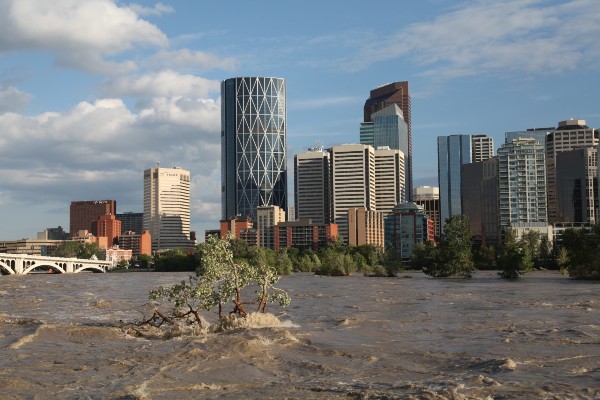
Incorporating Climate Change in Flood Estimation Guidance: Opportunities and Challenges for Practitioners
Our President & CEO, Dr. Elvis Asong, and colleagues have convened a session, “Incorporating Climate Change in Flood Estimation Guidance: Opportunities and Challenges for Practitioners,” targeted at engineers and professionals who grapple with integrating climate change allowances in the construction of infrastructure.
The Canadian Meteorological and Oceanographic Society (CMOS), Canadian Geophysical Union (CGU) and the Eastern Snow Conference (ESC) will host a joint scientific meeting from 1 to 8 June, 2022, in a virtual/on-line format.
Please submit abstracts electronically via this link by 28 February 2022.
Session details:
Title: Incorporating Climate Change in Flood Estimation Guidance: Opportunities and Challenges for Practitioners
Conveners:
Elvis Z. Asong, Ph.D., Principal Climate Scientist, Climalogik Inc., and Adjunct Professor, Global Institute for Water Security, University of Saskatchewan
Dae Il Jeong, Ph.D., P.Eng., Physical Sciences Specialist, Climate Data and Analysis Section, Science and Technology Branch, Environment and Climate Change Canada
Alain Mailhot, Ph.D., Professor, Centre Eau Terre Environnement, Institut National de la Recherche Scientifique (INRS)
Flooding from coastal, river or overland floods is the most common and expensive natural disaster in Canada. With the cost of flooding on the rise, there is a need for practical guidance on flood estimation methods to support evidence-based flood planning and design decisions in the face of climate change. Regulatory authorities are increasingly requiring the consideration of climate change allowances in design, and practising engineers and planners are looking towards flood estimation guidance documentation for direction. Estimation of flood hazard is critical to ensure optimal investments in adaptation actions that are appropriately targeted to avoid either costly over-design or life-threatening under-design. The primary role of flood guidance should be to (1) advise on the flood estimation method, and (2) support decision-making in planning and design. Yet, efforts to adjust this guidance to account for climate change vary across jurisdictions.
This session seeks to bring climate scientists and practitioners to address the following overarching question: how best can practical flood estimation guidance be modified to incorporate the additional uncertainty due to climate change and associated evolving risk?
We invite contributions that use examples to illustrate flood estimation in the areas:
A) Using climate change projections based of global and regional climate models to develop flood design values in practice
B) How to modify and use existing flood design guidelines or codes under changing conditions
C) How to take into consideration non-stationarity in planning, design, and management of flooding. For instance, how to define floodplains knowing that these may change over time and that they may be highly uncertain.
D) Economic cost analysis of incorporating climate change allowances in design flood values